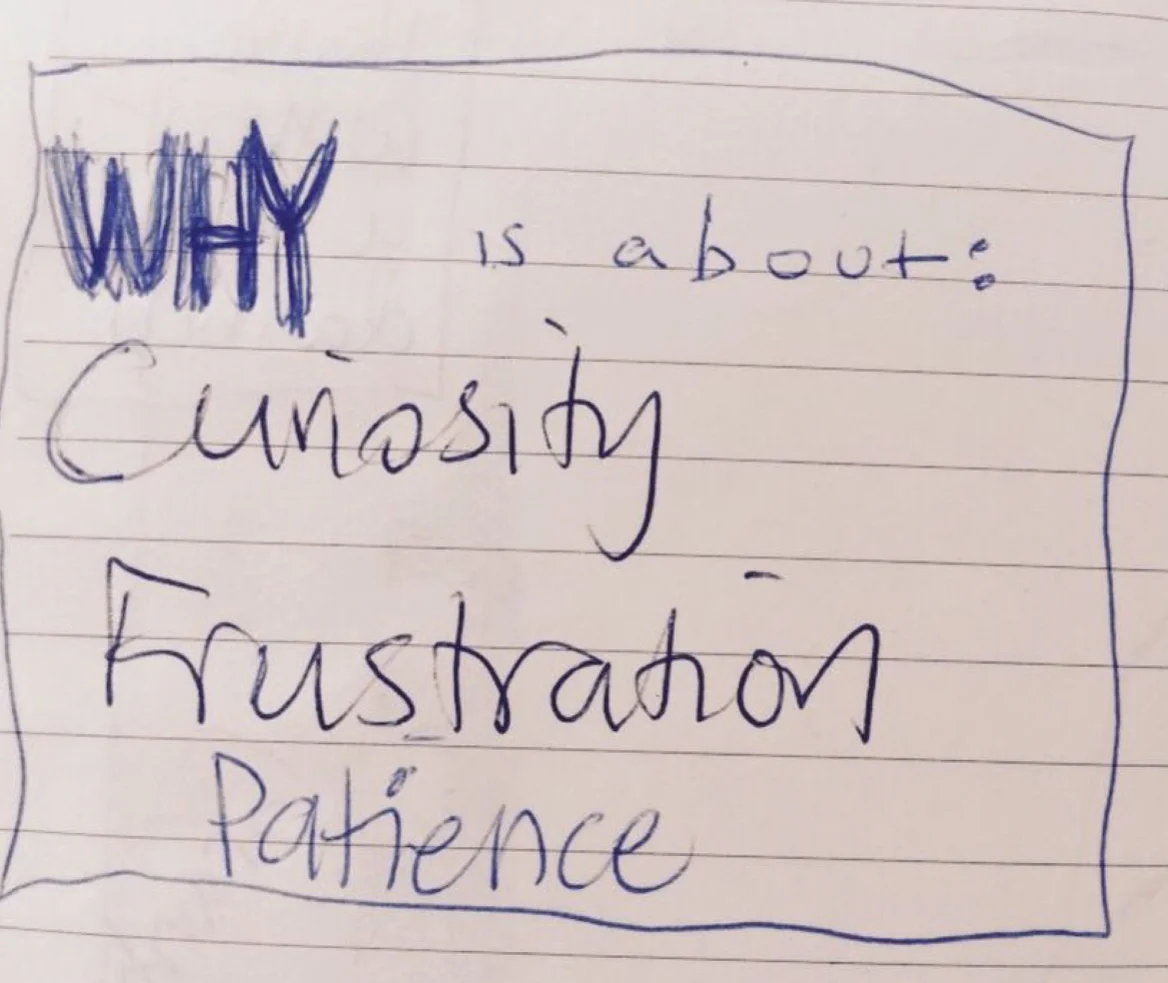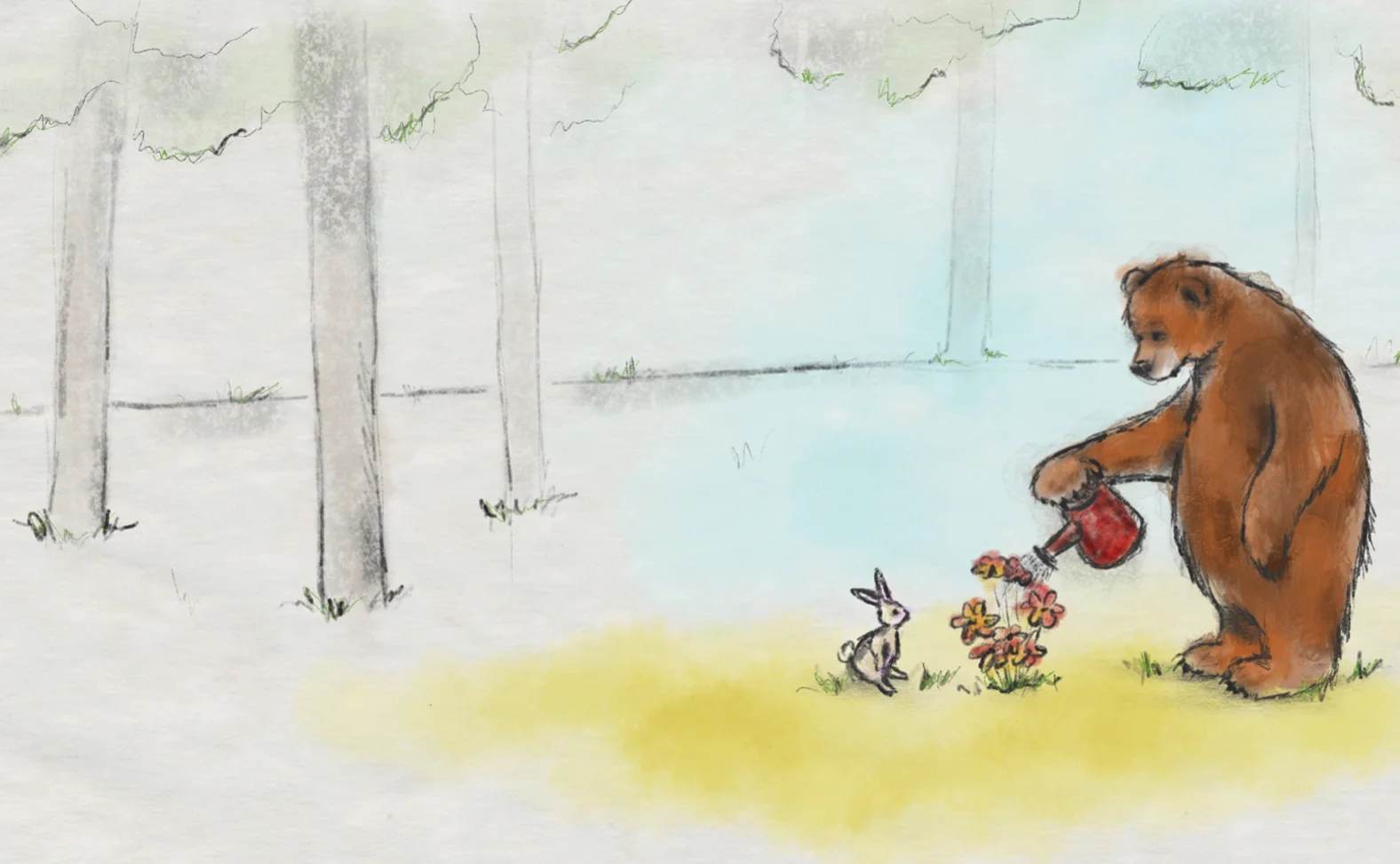In August 2019, my newest book, WHY?, will be released. Here’s a sneak peak of how it came to be!
I became intrigued with the idea of a book involving a character who incessantly questioned everything.
From the very beginning, I’d pictured a rabbit and a bear, but for the longest time, I resisted having a bear as a main character because I didn’t want him to be confused with Bear from my DOG AND BEAR series. Ultimately, I knew he’d be painted to look very different from Dog’s friend, Bear, so I let go of that nagging worry.
So, in the first few journal entries, I tried to figure out (as always) what the story would be. I played my usual “what if” game, and explored as many directions as possible.
At a certain stage of bookmaking, it’s always a good idea for an author to stop and definitively decide, WHAT IS THIS BOOK ABOUT? As you can see from the journal notes, WHY? began as a seed of an idea back in 2011. It often takes years of ruminating before an idea begins to take shape. Finally, I’d decided that the book would be about curiosity, frustration, and patience.
I was also pretty certain that I wanted to make the questions clear even though the reader never actually sees/reads the questions. To me, this is the ultimate in visual literacy! And I was also intrigued with the idea that the unspecified questions might actually vary, depending on the reader’s perspective. I began to think of as many answers to a myriad questions as I could. This was surprisingly difficult!
Once I had a good idea of who the characters were and which direction the story was headed, I began playing around with art styles. I always try to develop each art style to match each book and story.
There was a lot of “back and forth” - sketching and painting, and painting and sketching - until it felt just right. This is usually the case with all of my books, though this one had the added challenge of making sure that the rabbit’s questions were absolutely clear, based on the bear’s answers and the illustrations.
And ultimately, there were a few spreads that just didn’t work or make sense. It’s always an exercise in trust and courage for an author to be able to let go of any art or writing that, for whatever reason, just isn’t working.
In the example below, I’d become attached to the idea of creating an image of the bear carrying a huge mound of leaves, but after discussing it at length with my editor, we’d decided that the image raised more questions than it answered. Like, where is he going with those leaves? And, why does he need to clean up the forest in the first place?
As you can see from some of the earlier rough sketches, many of the unnecessary words were eventually removed, like, “repeated the rabbit” and “responded the bear”. After establishing who was asking the questions and who was answering, it was clear who was talking, so only the answers were needed to convey what was going on.
That is, until much later in the book when the bear becomes exasperated by the inquisitive rabbit, and is exhausted and frustrated because he’s finally been asked a question that he doesn’t know the answer to. It is then that he begins to walk away, and when the rabbit says, “don’t go”, it’s the bear who asks, “why?” There again, it’s important to identify who is speaking given that the two characters have switched places, but in general, I always employ a “less is more” approach to writing - and painting, too!























